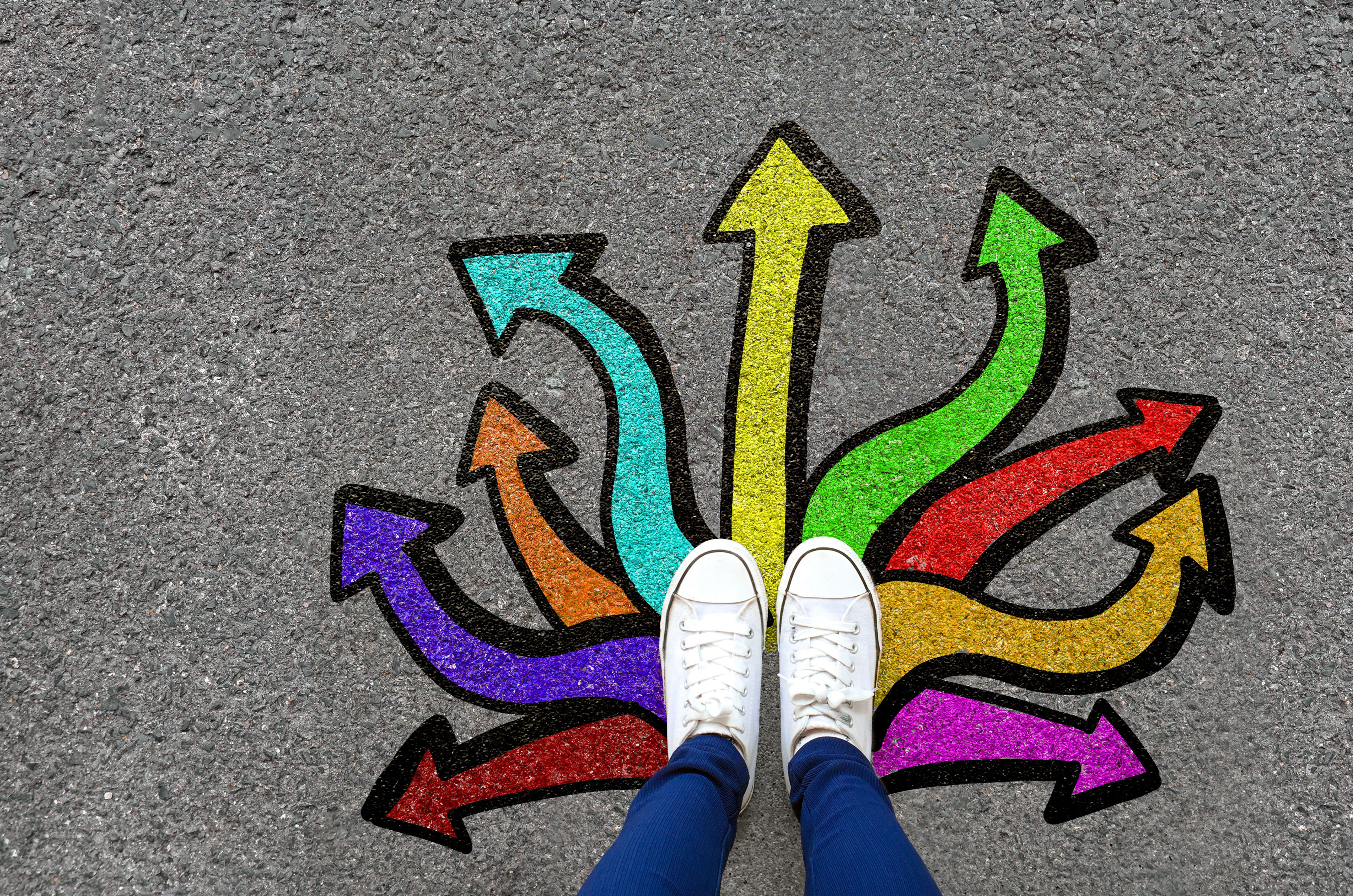Choice paralysis and how to solve it


Ash Billinghay Senior Copywriter
6 min read
Thursday, 20th January 2022
How too much choice can lead to no choice at all
There are many options available when it comes to fast food, and I enjoy most of them. A Big Mac (with a side of chicken nuggets), a Boneless Banquet, a Hawaiian pizza (don’t @ me) and, above all else, a battered sausage with chips and mushy peas are all meals I’ll gladly indulge in. They are choices that I’ve learnt to enjoy over years of experimenting. I know what I want, I know what it will taste like, and I know roughly how much it will cost.
However, there is one fast food option that I'll never go for, no matter how hungry I am.
And it’s not because I don’t enjoy a footlong baguette stuffed with filling - it’s because I never know what kind of footlong I want and what kind of filling I want in it. The options seem endless, and I have neither the time or the budget to try all of them. So instead I try nothing and go somewhere else.
This is called choice paralysis, and when it happens on your website it could be costing you big money.
What is choice paralysis and why does it matter?
To demonstrate choice paralysis, you can just do a simple search on Amazon. Let’s try looking for an iPhone charger.
As you can see, there are over 10,000 iPhone chargers available for me to buy. On the first page alone there are 16, each one claiming to be more unbreakable and high speed than the last.
I, being a regular schmuck, don’t know the difference between one iPhone charger and another. Having over 10,000 options feels like too much choice for me, so I’ll either click on the first one I see or give up all together and not buy one. Sorry iPhone, looks like another night on low power mode for you.
The same is true for online fashion and design sites. Just take a look at ASOS - with 17.4 million items available, you won't just be spoilt for choice, you'll be blown away by it. I love a vibrant printed shirt, but with that much print available my eyes will get sore.
Wayfair is another example. They've got just what I need, 10.3 million examples of it to be exact, meaning unless I know exactly what I'm looking for I could end up being boggled by browsing.
That’s what choice paralysis does - it overwhelms customers and risks them giving up on their purchase.
What does choice paralysis look like?
Let’s put this in practice on a website I actually worked on. We’ll call them Minusnet.
When I first started writing their new website, the product page presented multiple variations of the same broadband package. This happened because one version had a deal attached to it, making it a fraction cheaper and saving you money on any upfront fees.
The problem was two-fold: First, it made the page look confusing. With so much going on and so many numbers to read, customers couldn’t clearly distinguish between the two variations. Secondly, why would anyone choose to buy the product that costs more money? Why give them that choice and risk unsettling them at the start of their purchase journey?
On top of that, at the bottom of the product page was a message that looked like this:
So can I get broadband that’s even cheaper? How does that work? What does that small, inaccessible font say? Why is the box greyed out?
This page posed more questions than it did answers.
After the page had been redesigned (we got rid of all the non-deal options) it improved conversion by over 13%. The choice became clearer and the customers became more confident.
How can you cure choice paralysis?
A good product page should present customers with a clear choice, letting them easily compare their options.
Look at the same internet provider page now.
All of your internet options are lined up next to each other. You can see how fast they are, how much they’ll cost and what offers are currently available. All those bullet points have vanished and been replaced with one line explaining the benefits of each product.
The choice has been made easier. The clutter has been reduced. The key part of the user journey has been made less of a headache.
As Gordon Ramsey always points out, a smaller menu means the customers will be able to make a more informed decision. I mean, he doesn’t say it exactly like that. It’s more, “Look at the f*cking state of this piece of sh*t! You call that a menu? I call THIS a menu!” *punches the chef in the face, burns his restaurant, runs off with his wife.* But the point stands.
What role does content design play in choice?
If I had to explain content design in a sentence, I’d say it’s about putting things the user needs in a place the user expects. When it comes to choosing a product, my role changes a little. Here, it’s not just about giving the user what they need - it’s about giving the user what you want them to need.
If that sounds a little bit like dark arts, let me explain.
You want the user to be able to find the best product, but you also want them to find the product you want to sell. So, in the case of broadband, we wanted people to buy fibre products. We put the deals banners on the fibre product cards to make them look more appealing, and ensured they were positioned above the fold to make people more likely to see them.
We also analysed users’ reading patterns. People take in information online a particular way, often following an F pattern as they read. This article talks all about it. My job as the content designer was to make sure the information people needed formed part of that F, meaning the names of the products and their USPs sat on the top bar going across.
Further down, on the second bar, you’d find further USPs around how easy it was to switch your broadband provider.
The final piece of information, sat on the vertical line, was the boring, legal stuff that no-one really wanted to read.
This F guided users to see the information they needed, and the information we wanted them to see. It’s marketing backed up by science, research and the alphabet.
What if you sell loads of products?
For some companies, like the Amazon example I showed you earlier, limiting the product choice isn’t really an option. They’ve got so much to sell (and SO MUCH money to make) that they don’t want to hide anything. That’s where filters come in handy. Allowing your users to filter products lets them see everything you sell without risking them feeling overwhelmed. Just be sure to limit the options the filter presents, otherwise you end up facing the same choice paralysis all over again.
Successful filters use the options customers are already searching for. So, for those iPhone chargers, you’d use options like ‘lightning fast’ and ‘unbreakable’ to limit results, or maybe even colours or material.
This very useful blog on how to design a good filter should steer you in the right direction.
Are you spoilt for choice?
You’ll be able to tell if your customers are suffering from choice paralysis by looking at their behaviour flow. We do that using Google Analytics, and can tell if your site traffic is dropping off at your products page. If it is, we know how to fix it. Talk to us about content design by emailing ash.billinghay@riseatseven.com or sliding into my DMs.
